Stellantis’ Peugeot was represented on stage during CEO Carlos Tavares’ keynote speech at CES 2023 in Las Vegas earlier this week. The French automaker unveiled its new Inception Concept, a radically designed battery-electric vehicle (BEV) whose design language will be the inspiration for the brand’s future models going forward.
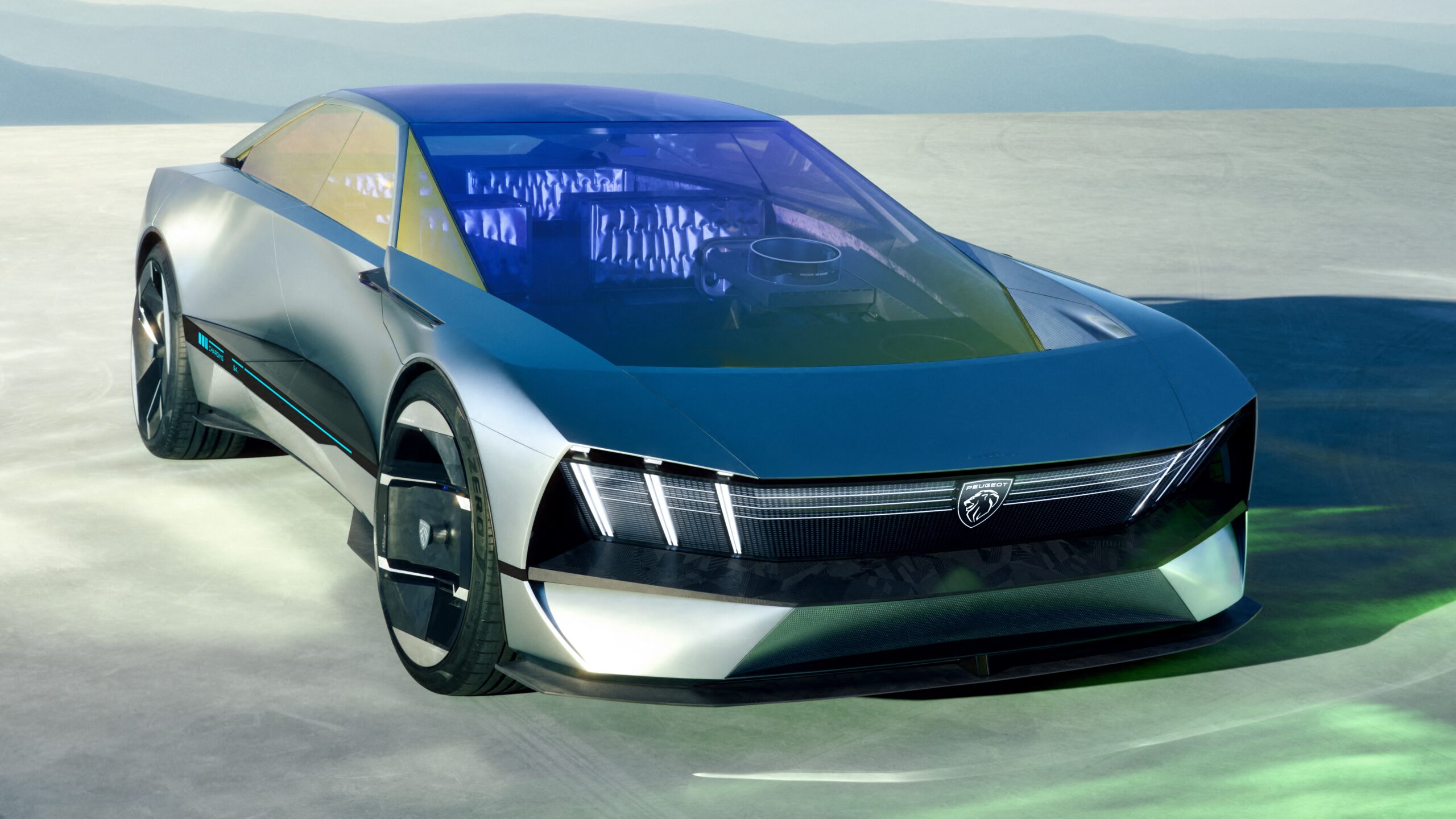
The very angular two-door coupe is based on the same STLA Large architecture that will underpin many Chrysler Group vehicles in the near future, such as the Dodge Charger, Jeep® Recon, Wagoneer S, and Chrysler Airflow. The Inception Concept keeps the STLA Large compacted compared to its American siblings. Measuring in at 16.4 feet (5 meters) long, but only 4.39 feet (1.34 meters) tall.
Inception rides on a similar 800-volt architecture at the Dodge Charger Daytona SRT Banshee Concept BEV. The Peugeot uses a 100 kWh battery providing the car with a range of 500 miles (800 kilometers), right on cue with the numbers Stellantis said its 800-volt architecture would deliver during its EV Day 2021 presentation. With an induction charging system simplifying charging by the absence of cable, the car can be charged to an estimated 93 miles (150 kilometers) of range in around 5 minutes.
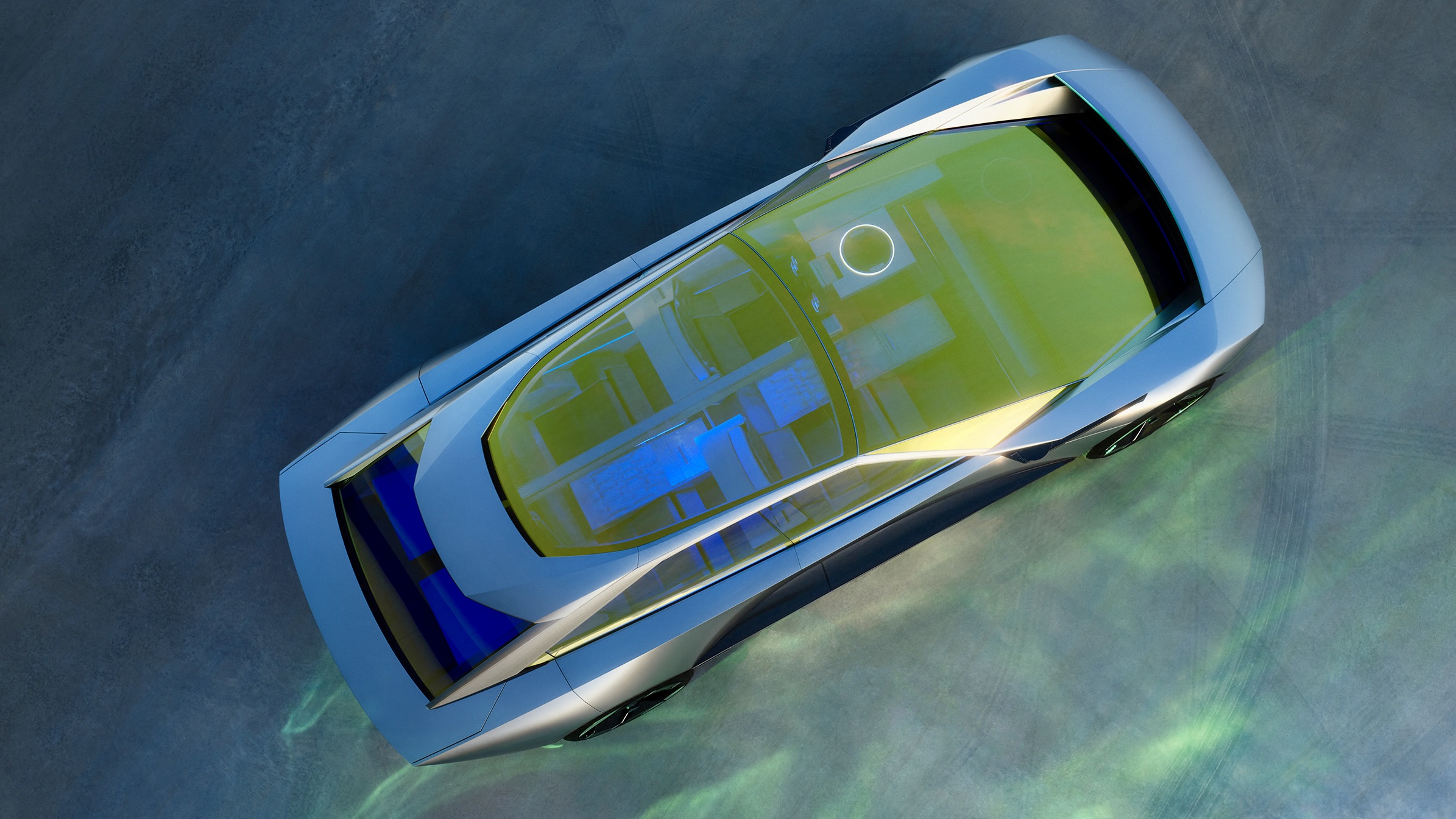
Peugeot says the Inception is powered by a dual e-motor layout that delivers 500 kW (670 horsepower) combined that is put to the ground through an all-wheel drive (AWD) system. It is enough power to propel the Inception from 0 to 62 mph (0 to 100 km/h) in under 3 seconds. That’s near Challenger SRT HELLCAT territory.
Inside, the Inception features Peugeot’s next-gen i-Cockpit® design with a new “Hypersquare” control system. Hypersquare ditches the traditional steering shaft in favor of a steer-by-wire system. Can’t get any more video game than that? Well, maybe it can.
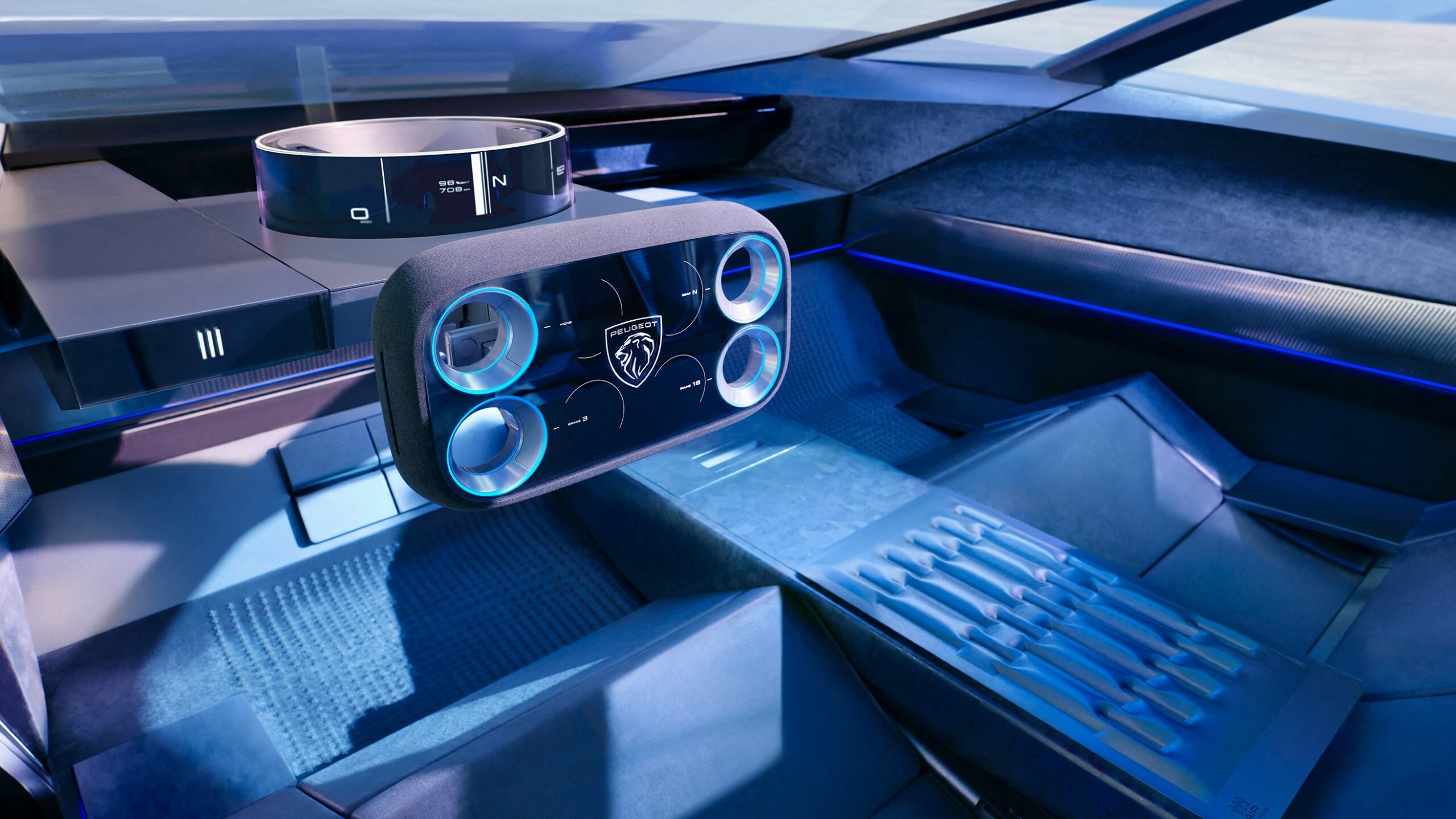
Gone is the traditional round steering wheel that we know of and it replaced by a rectangular-type wheel. The new wheel design features controls that are accessible by moving the driver’s thumb in one of four holes located on the corners of the wheel.
The Inception Concept’s radical exterior design is highlighted by a unique angular windshield, side glass, and sunroof. According to the official press release, the total glass space across the car measure 78 sq. feet (7.25 sq. meters). Peugeot says the glass is a Narima composite, which undergoes the same metal oxide treatment that NASA uses for its astronaut helmet visors. The treatment gives the glass a strange yellow/purplish hue, making it look like it was inspired by a pair of Pit Viper sunglasses.
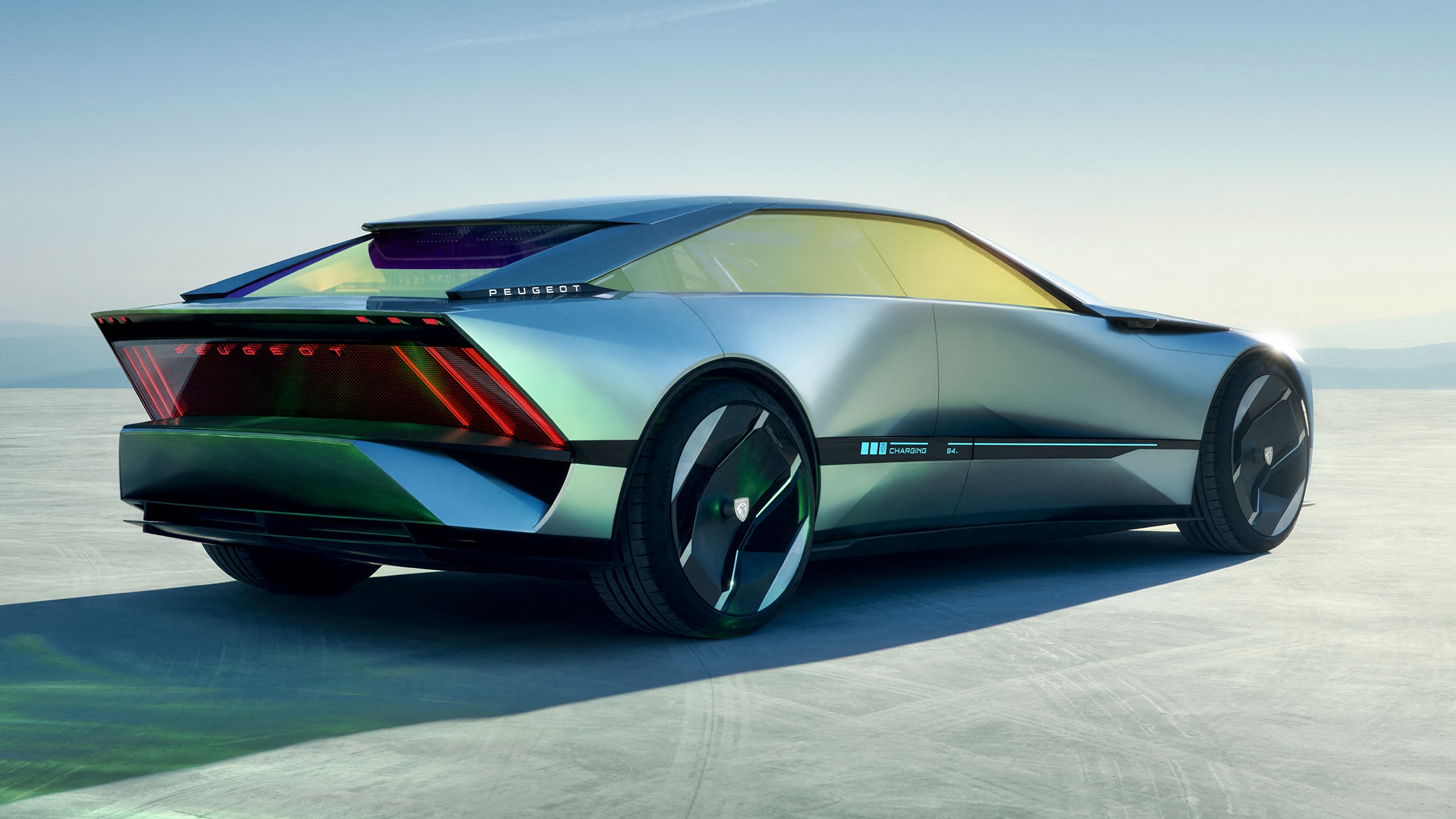
The front end of the car adopts the brand new Peugeot lion, which now incorporates the three emblematic claws. This new very identity front panel merges the entire grille part and the signature part within the same object that also embeds the sensors. The exterior lighting mimics the brand’s 9X8 Hypercar racer with three optical “claw” lights.
Peugeot also says that the Inception features the company’s latest STLA AutoDrive Level 4 autonomy program. When activated, the interior can be converted into a comfort-oriented one, which retracts the Hypersquare steering, hides the dashboard, and makes the interior into more of a lounge.
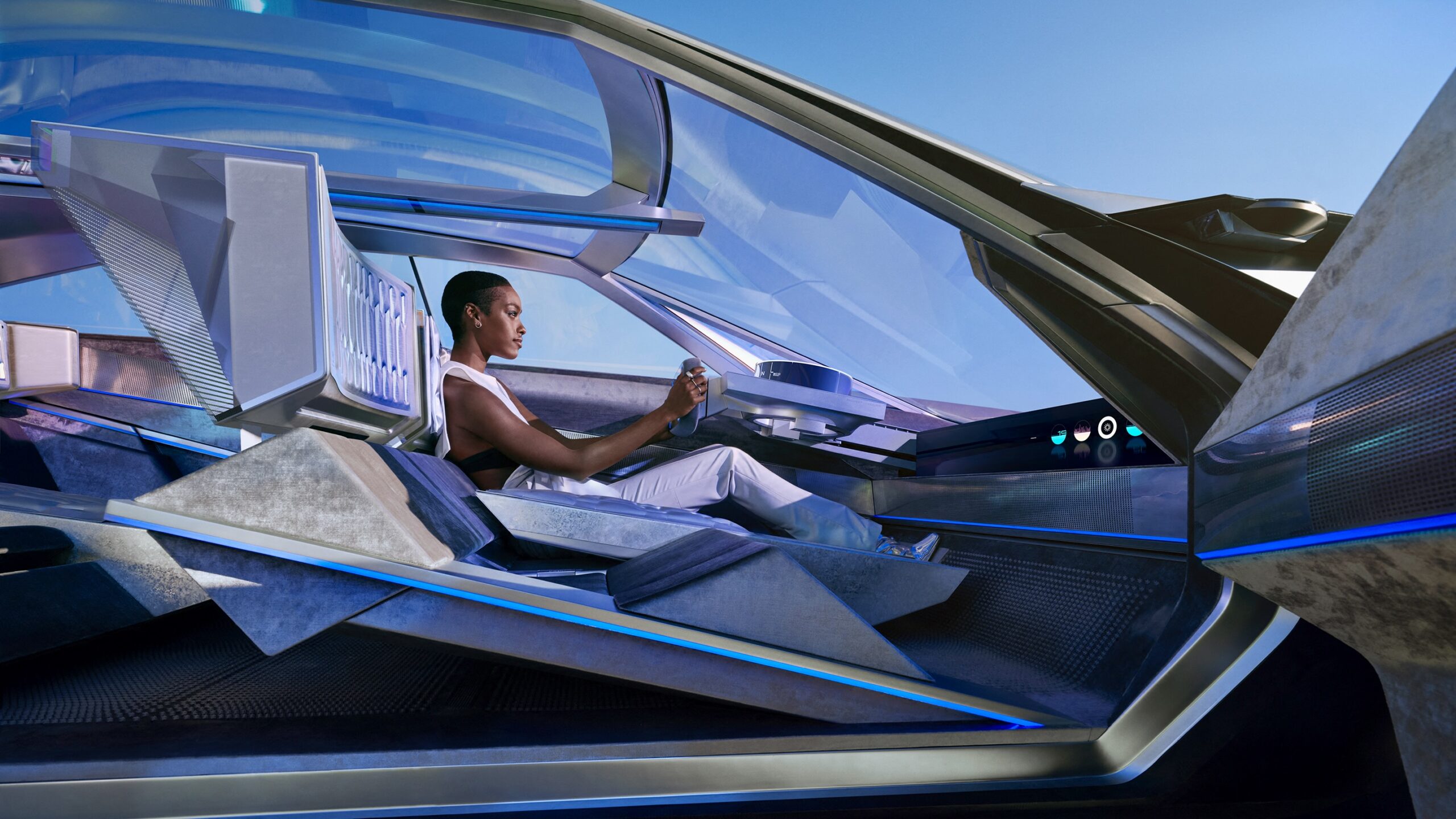
A “Tech Bar” horizontally crosses the skin of the doors. In addition to the level of battery charge, the Tech Bar incorporates the usual welcome and goodbye messages, as well as the many sensors and radars related to the driving delegation, leaving a completely smooth body, because they lack these technical elements.
Peugeot says that many technical advances found on the Inception Concept will make it in some form to its future vehicle portfolio by 2026. Stellantis says Peugeot will launch five BEVs over the next two years, making it a leader in the European BEV market.

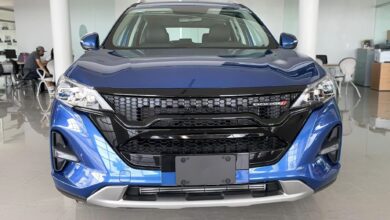
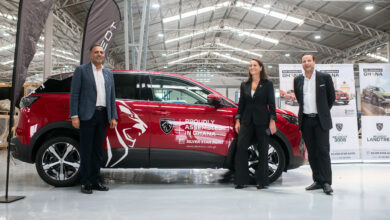
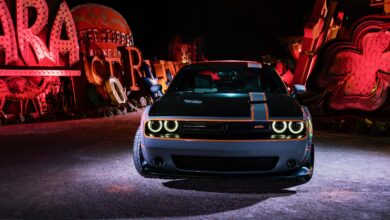
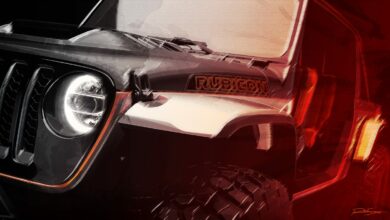

6 replies
Loading new replies...
Join the full discussion at the Mopar Insiders Forum →